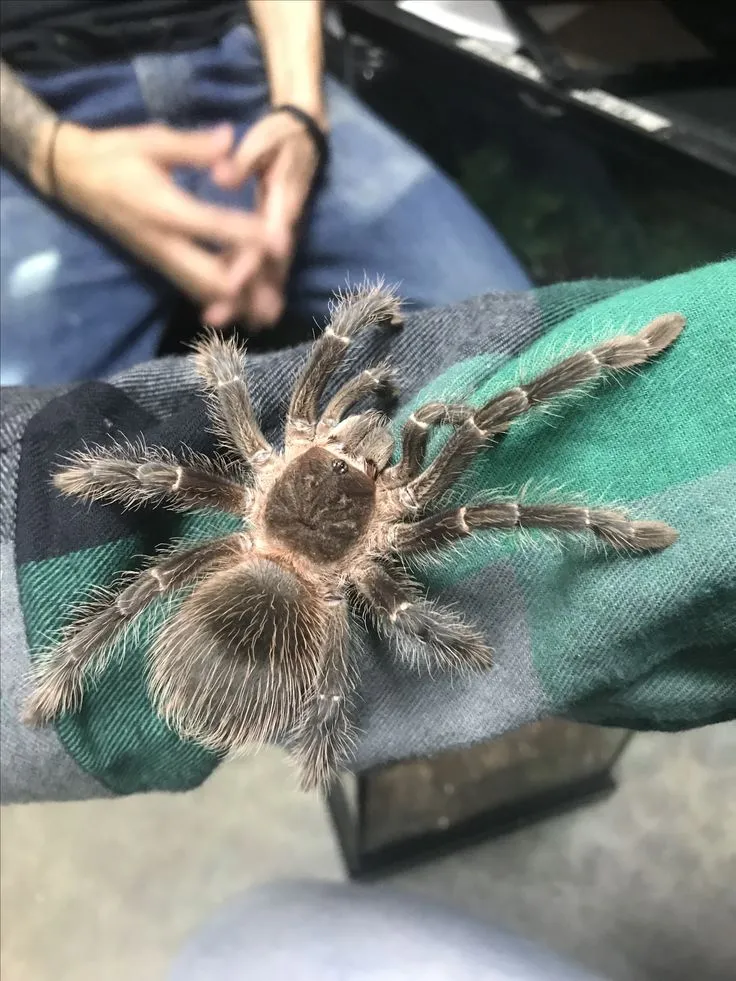Choosing Your Live Pet Tarantula
Bringing a live pet tarantula into your home can be an exciting venture. These fascinating creatures offer a unique pet-keeping experience, but it’s crucial to approach it with knowledge and preparation. This guide will help you navigate the process of choosing the best tarantula for you, ensuring both your safety and the well-being of your new pet. Understanding the needs of these arachnids is key to providing them with a comfortable and enriching life. Before you welcome a tarantula, it’s important to do your research and understand the commitment involved in their care. This includes everything from habitat setup and feeding to recognizing signs of illness and safe handling practices.
Considerations Before Getting a Tarantula
Before bringing a live pet tarantula home, take a moment to consider whether you are ready for the responsibility. Tarantulas are relatively low-maintenance pets, but they still require dedicated care. They have specific habitat needs, dietary requirements, and health considerations. You should be prepared to provide these consistently. Consider your lifestyle, including your living situation and how much time you can dedicate to caring for a tarantula. Some tarantulas can live for many years, so it’s a long-term commitment. Also, research any local regulations regarding exotic pet ownership in your area.
Tarantula Species to Consider
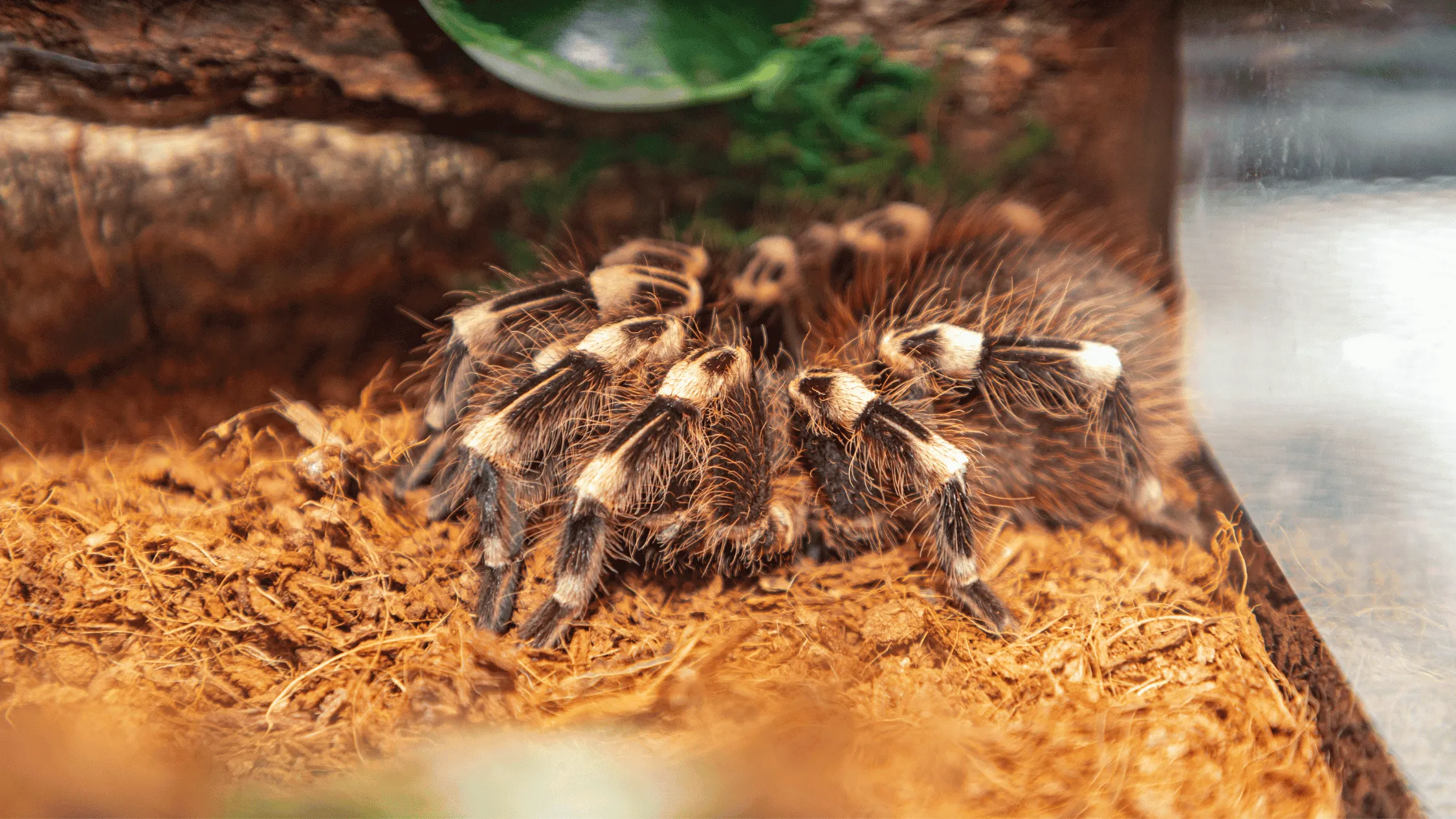
There are numerous tarantula species, each with distinct characteristics. Some are more docile and suitable for beginners, while others are more aggressive or have specific care requirements. Research different species to find one that aligns with your experience level and preferences. Popular beginner-friendly species include the Chilean Rose Hair tarantula and the Mexican Red Knee tarantula, known for their relatively calm temperaments and hardiness. More experienced keepers might consider species like the Cobalt Blue or the Greenbottle Blue, which are visually stunning but require more specialized care. Considering the temperament, size, and overall care needs of each species ensures a good match between you and your new pet. (Image: tarantula-species-selection.webp)
Size and Temperament
Tarantula size varies significantly depending on the species. Some are small, while others can grow to impressive sizes. Consider the space you have available for an enclosure. Temperament is also crucial. Some tarantulas are docile and tolerate handling, while others are defensive and prone to biting or flicking urticating hairs (small, irritating hairs used as a defense mechanism). Research the typical temperament of the species you’re considering. This will help you manage your expectations and ensure a safe interaction experience with your tarantula. Handling should always be done with caution, regardless of the species, and should be kept to a minimum.
Lifespan and Care Requirements
Tarantulas can live for many years. Females generally live longer than males. Make sure you are prepared for a long-term commitment. Research the specific care requirements of the tarantula species you are considering, as these vary. Consider factors like humidity, temperature, substrate type, and feeding frequency. Ensure you can consistently meet these needs. Adequate care includes providing a suitable habitat, proper nutrition, and a clean environment. Many online resources provide detailed care sheets for different tarantula species. Also, check the local exotic animal vet’s availability.
Where to Buy Your Live Pet Tarantula
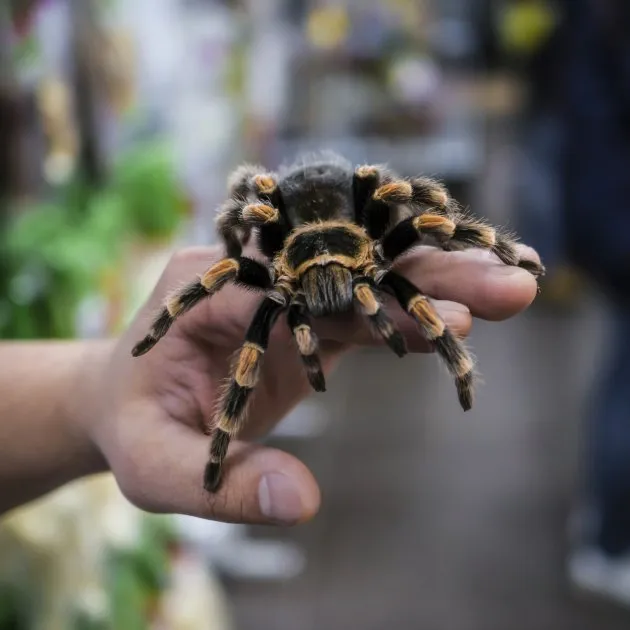
Reputable Breeders vs. Pet Stores
When acquiring a live pet tarantula, choose a reputable source. Breeders often specialize in tarantulas and can provide more detailed information about the species and their care. They also often offer healthier specimens compared to pet stores. Pet stores may be a more convenient option, but the staff might not be as knowledgeable about tarantulas. The conditions in pet stores might also not always be ideal for tarantulas. Ask the breeder or store staff about the tarantula’s origin, feeding schedule, and any health concerns. Choose a seller that is passionate about tarantula care and prioritizes the well-being of their animals.
Inspecting for a Healthy Tarantula
Before purchasing, examine the tarantula closely. Look for a tarantula that is alert and responsive, with a plump abdomen. Avoid tarantulas that appear thin, lethargic, or have any visible injuries. Check for mites, which can be a sign of poor health or improper care. Also, check for any missing limbs or signs of disease. A healthy tarantula will have a shiny exoskeleton and should move with ease. A good seller will allow you to inspect the tarantula and answer any questions you have. Take your time, and don’t feel pressured to make a purchase if you are not completely satisfied with the tarantula’s health.
Setting Up Your Live Pet Tarantula’s Habitat
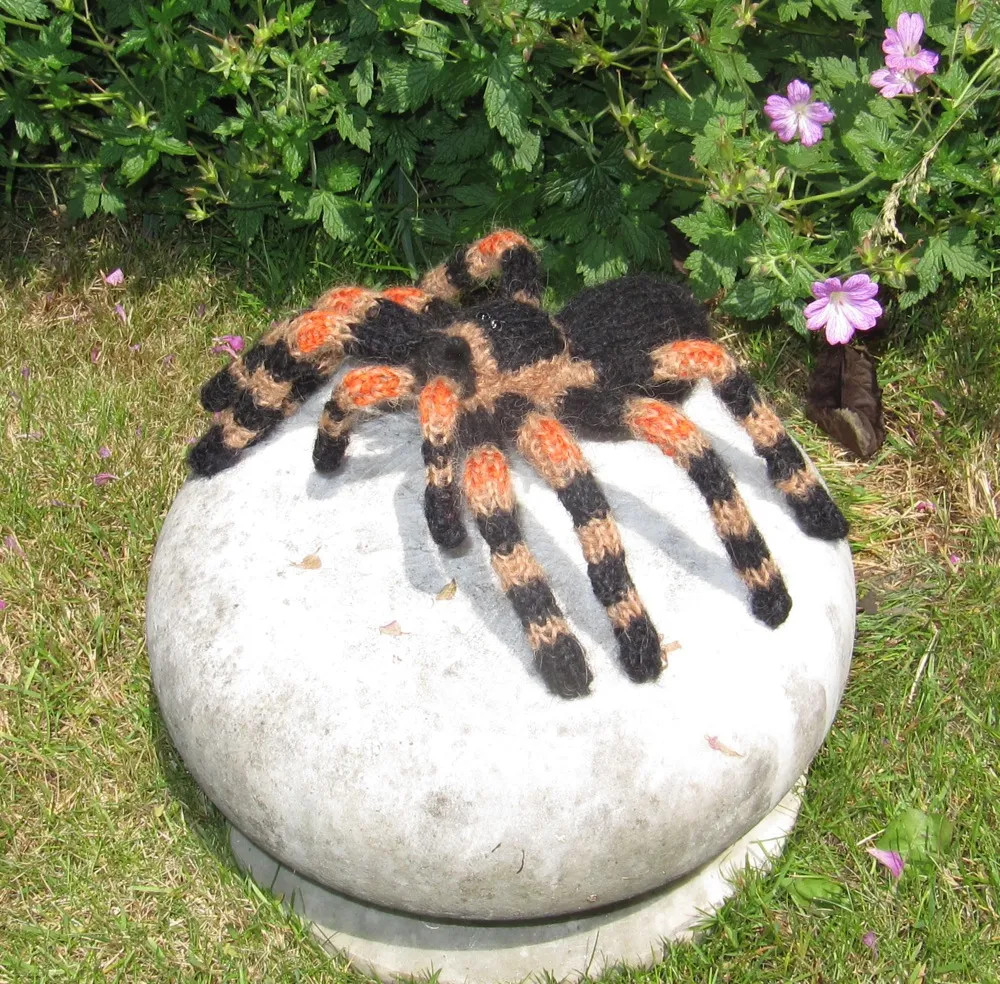
Setting up the right habitat is crucial for your tarantula’s health and well-being. The enclosure must provide a safe and comfortable environment. The size of the enclosure depends on the size of the tarantula. It should be large enough for the tarantula to move around but not too large. Too large of an enclosure can make it difficult for a young tarantula to find food. Proper substrate, temperature, humidity, and decor are essential. A well-designed habitat will mimic the tarantula’s natural environment, reducing stress and promoting a healthy lifestyle. (Image: tarantula-enclosure-setup.webp)
Enclosure Size and Type
The enclosure should be appropriately sized for the tarantula. For terrestrial species, a larger horizontal surface area is typically preferred, while arboreal species may benefit from a taller enclosure. The enclosure should be made of a material that allows for good ventilation, such as glass or acrylic. The enclosure should have a secure lid to prevent escapes. Make sure the lid is escape-proof, as tarantulas are adept climbers. Also, make sure the enclosure is easy to clean and maintain.
Substrate and Decor
The substrate should be absorbent, non-toxic, and suitable for the tarantula species. Good substrate options include coconut fiber, peat moss, and vermiculite. Avoid using substrates like sand or gravel, which can be harmful. Provide a hide, such as a piece of cork bark or a hollow log, where the tarantula can retreat and feel secure. Include water dishes and decorations that mimic the tarantula’s natural environment. Avoid anything that could be toxic or sharp and potentially injure the tarantula. Also, replace the substrate regularly to prevent the buildup of waste and bacteria. (Image: tarantula-habitat-decor.webp)
Temperature and Humidity Control
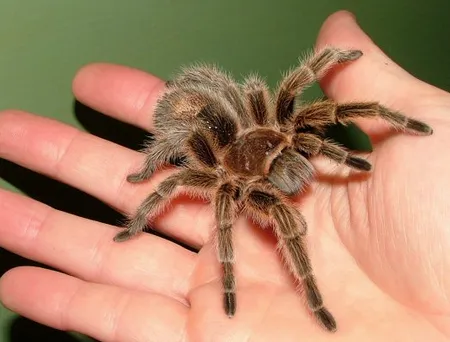
Maintain the correct temperature and humidity levels for your tarantula’s species. Use a thermometer and hygrometer to monitor the environment. Most tarantulas thrive in temperatures between 70°F and 80°F (21°C and 27°C). Humidity levels will vary depending on the species. Some species require higher humidity than others. Use a water dish to maintain humidity levels. Misting the enclosure can also help to increase humidity. Avoid extreme temperatures or humidity levels. Proper climate control is crucial for the tarantula’s health and molting process.
Feeding Your Live Pet Tarantula
Proper nutrition is essential for a healthy tarantula. Tarantulas are primarily insectivores, and their diet should consist mainly of live insects. The frequency and type of feeding depend on the tarantula’s age, species, and size. It’s important to provide a balanced diet to ensure proper growth and development. Also, remove any uneaten food after 24 hours to prevent mold or bacterial growth. The nutritional requirements vary based on species, but generally, a variety of insects is preferred. (Image: tarantula-feeding-time.webp)
What to Feed Your Tarantula
Appropriate food items include crickets, roaches, mealworms, and other feeder insects. The size of the prey should be appropriate for the tarantula’s size. The general rule is that the prey item should be no larger than the tarantula’s abdomen. Offer a variety of insects to provide a balanced diet. Gut-load feeder insects with nutritious foods before feeding them to your tarantula. Gut-loading involves feeding the insects a diet rich in vitamins and minerals, which are then passed on to your tarantula. You can purchase gut-loading foods at most pet stores.
Feeding Frequency and Amounts
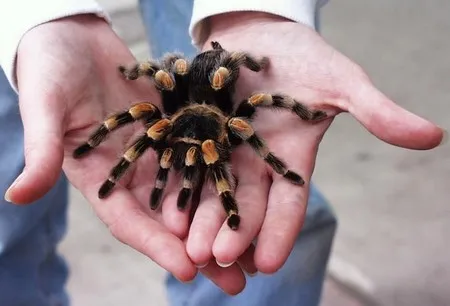
Feeding frequency depends on the tarantula’s age and metabolism. Spiderlings (young tarantulas) may need to be fed every few days, while adults may only need to be fed once or twice a week. Observe your tarantula and adjust the feeding schedule accordingly. If the tarantula refuses to eat, it may be about to molt. Don’t overfeed your tarantula, as this can lead to health issues. Remove any uneaten prey within 24 hours to prevent stress on your tarantula. Also, ensure that fresh water is always available. Young tarantulas, in particular, need more frequent feeding sessions.
Handling Your Live Pet Tarantula
While some tarantulas can be handled, it is generally best to minimize handling. Tarantulas are fragile, and dropping them can lead to serious injury. Some species have defensive behaviors like biting or flicking urticating hairs, which can cause irritation. Handling, if necessary, should be done with caution and understanding. Even the most docile tarantula can bite if it feels threatened. Always prioritize the safety of both the tarantula and yourself. This is key to a harmonious relationship with your pet tarantula. (Image: tarantula-handling-safely.webp)
Safe Handling Practices
If you choose to handle your tarantula, do so over a soft surface, like a bed or a carpet, in case it falls. Gently coax the tarantula onto your hand, and avoid sudden movements. Never squeeze or grab the tarantula, as this can injure it. Always wash your hands before and after handling your tarantula. Also, be aware of any urticating hairs that the tarantula might flick. Make sure to avoid touching your face after handling your tarantula. Handle the tarantula for short periods to minimize stress.
Recognizing Stress Signals
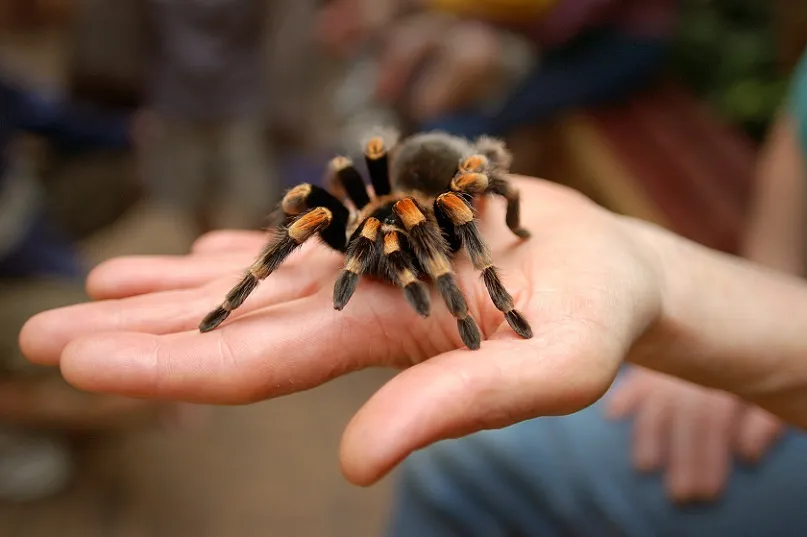
Learn to recognize signs of stress in your tarantula. Defensive postures like raising their front legs, or exposing their fangs, indicate that they feel threatened. Flicking urticating hairs is another defensive behavior. A tarantula that is not feeling well may also be lethargic, refuse to eat, or retreat to its hide. If you notice any of these signs, stop handling the tarantula immediately and allow it to return to its enclosure. If the signs persist, consult with a veterinarian specializing in exotic animals.
Common Health Issues and Prevention
Like any pet, tarantulas can experience health issues. Common problems include parasites, fungal infections, and injuries. Prevention is key to maintaining a healthy tarantula. Providing a clean and appropriate habitat, a balanced diet, and proper temperature and humidity levels will help prevent many health problems. Regular observation and monitoring can help you identify potential issues early. Proper care and maintenance can significantly reduce the risk of health issues. Recognizing symptoms early is crucial to successful treatment and the overall well-being of the tarantula. (Image: tarantula-healthy-tarantula.webp)
Moulting Process and What to Expect
Moulting is a natural process where tarantulas shed their exoskeletons to grow. During this time, the tarantula will usually stop eating and become less active. The tarantula will lie on its back. Do not disturb the tarantula during the moulting process. It may take several hours or even days for the tarantula to complete the moulting process. After moulting, the tarantula’s new exoskeleton will be soft and vulnerable. Do not feed the tarantula until its exoskeleton has hardened. Also, do not handle the tarantula during this period. Providing a moist environment can help facilitate a successful moult. (Image: tarantula-molting-process.webp)
Signs of Illness or Injury
Monitor your tarantula for signs of illness or injury. These can include lethargy, loss of appetite, unusual behaviors, or physical damage. Other signs include swelling, discoloration, or fluid leakage. If you notice any of these symptoms, isolate the tarantula and consult with a veterinarian specializing in exotic animals. Early diagnosis and treatment are essential. Many illnesses can be treated effectively if caught early. Your veterinarian can provide guidance on the best course of action and ensure your tarantula receives the care it needs.
Caring for a live pet tarantula is a rewarding experience. By understanding their needs and providing the right environment, you can enjoy the unique companionship these fascinating creatures offer. Choose the right species, provide a proper habitat, and ensure proper nutrition, and you are well on your way to being a successful tarantula keeper.
